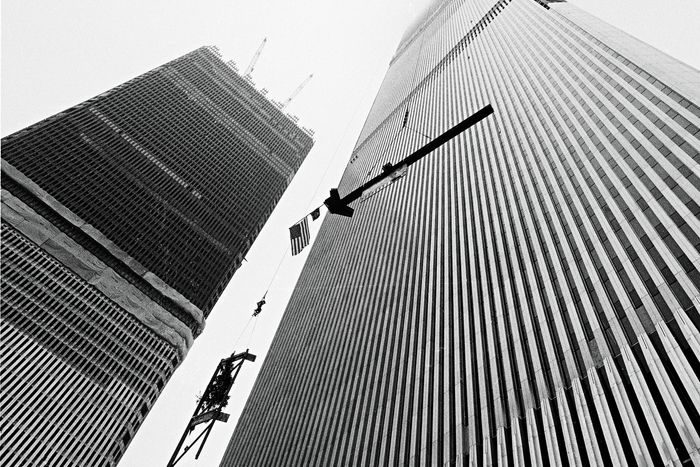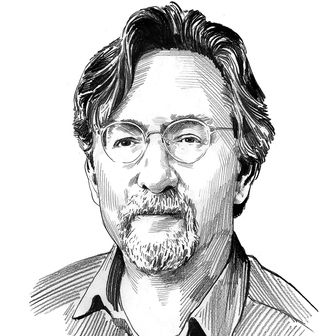
The two colossi that started rising out of lower Manhattan’s landfill in the mid-sixties looked like the creation of some Howard Roark–like super-architect, filling the sky with steel. In fact, the designer of the original World Trade Center was the small and soft-spoken Minoru Yamasaki, who in an era of brutalists, heroic modernists, and fierce aesthetic battles was known for his politeness and humility. “Architecture must be dignified and elegant,” he said in 1962. “It must be humanly scaled to man so that it belongs to him, so that he has pride in it, so that he loves it, so that he wishes to touch it.”
A cloud of ironies hovered around the Twin Towers, starting with the fact that such bulky buildings sprang from the mind of such a slight man. One poignant wrinkle is that a Nisei born in a Seattle slum, tormented regularly as a child for his ethnic origins, designed the structures that came to represent America’s global domination. Nothing could have been more foreign to his philosophy. Yamasaki aimed to imbue spaces with a trinity of quiet values—“delight, serenity, and surprise”—yet the towers he created loomed forbiddingly over a cold, gusty plain, and the love he hoped people would feel for them emerged only after they were gone.
In their early days, they seemed at once monstrous and fussy, graceless interlopers that thrust themselves on the city’s fabric and skyline and defined a scale that was anything but human. A rhythmic series of pointed arches invoked the Gothic cathedral for no obvious reason but did nothing to relieve the vast expanse of brawn. The Times’s architecture critic Ada Louise Huxtable called the Towers “the daintiest big buildings in the world … the ultimate Disneyland fairy tale blockbuster.” It was not a compliment.
Despite his demeanor, Yamasaki waded enthusiastically into his profession’s ideological battlegrounds. He attacked the austere orthodoxies of modernism as a “dogma of rectangles.” He spoke up for ornamentation and advocated graciousness, infuriating colleagues and critics who dismissed his designs as shallow and pretty and lacking in toughness. (Even Yamasaki once admitted to an interviewer: “We have built some real dogs.”)
His buildings wound up suffering for the period’s sins of ambition. (He himself died in 1986.) In another of those merciless ironies, Yamasaki’s name first became vividly associated with a spectacular, symbolically loaded act of destruction nearly 30 years before 9/11. One of his earliest and most lavishly praised works, the Pruitt-Igoe housing project in St. Louis, opened in the mid-fifties and quickly became crime-ridden and derelict, an emblem of architects’ failure to bring dignity to impoverished lives. When it was finally dynamited, the historian Charles Jencks cheered the demolition as the end of a misguided dream: “Modern Architecture died in St. Louis, Missouri, on July 15, 1972 at 3:32 p.m.”
“The World Trade Center is a living symbol of man’s dedication to world peace … a representation of man’s belief in humanity, his need for individual dignity, his beliefs in the cooperation of men, and, through cooperation, his ability to find greatness.”
—Minoru Yamasaki, at the opening ceremony for the Twin Towers in 1973
